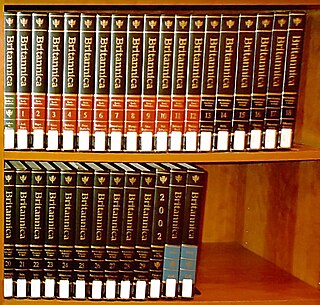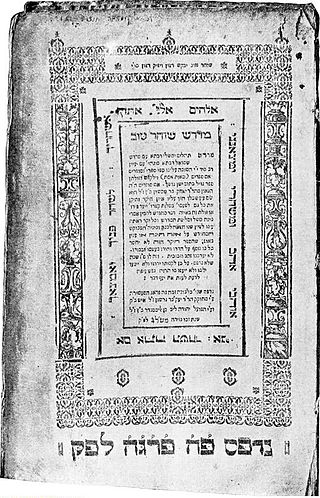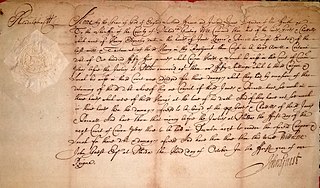Related Research Articles

An encyclopedia or encyclopædia is a reference work or compendium providing summaries of knowledge, either general or special, to a particular field or discipline. Encyclopedias are divided into articles or entries that are arranged alphabetically by article name or by thematic categories, or else are hyperlinked and searchable. Encyclopedia entries are longer and more detailed than those in most dictionaries. Generally speaking, encyclopedia articles focus on factual information concerning the subject named in the article's title; this is unlike dictionary entries, which focus on linguistic information about words, such as their etymology, meaning, pronunciation, use, and grammatical forms.

Gerolamo Cardano was an Italian polymath whose interests and proficiencies ranged through those of mathematician, physician, biologist, physicist, chemist, astrologer, astronomer, philosopher, writer, and gambler. He became one of the most influential mathematicians of the Renaissance and one of the key figures in the foundation of probability; he introduced the binomial coefficients and the binomial theorem in the Western world. He wrote more than 200 works on science.

Midrash is expansive Jewish Biblical exegesis using a rabbinic mode of interpretation prominent in the Talmud. The word itself means "textual interpretation", "study", or "exegesis", derived from the root verb darash (דָּרַשׁ), which means "resort to, seek, seek with care, enquire, require", forms of which appear frequently in the Hebrew Bible.

In common law, a writ is a formal written order issued by a body with administrative or judicial jurisdiction; in modern usage, this body is generally a court. Warrants, prerogative writs, subpoenas, and certiorari are common types of writs, but many forms exist and have existed.

A library catalog is a register of all bibliographic items found in a library or group of libraries, such as a network of libraries at several locations. A catalog for a group of libraries is also called a union catalog. A bibliographic item can be any information entity that is considered library material, or a group of library materials, or linked from the catalog as far as it is relevant to the catalog and to the users (patrons) of the library.
John Rastell was an English printer, author, member of parliament, and barrister.

Genesis Rabbah is a religious text from Judaism's classical period, probably written between 300 and 500 CE with some later additions. It is a midrash comprising a collection of ancient rabbinical homiletical interpretations of the Book of Genesis.
The Corpus Juris Canonici is a collection of significant sources of the Canon law of the Catholic Church that was applicable to the Latin Church. It was replaced by the 1917 Code of Canon Law which went into effect in 1918. The 1917 Code was later replaced by the 1983 Code of Canon Law, the codification of canon law currently in effect for the Latin Church.

Conversations on the Plurality of Worlds is a popular science book by French author Bernard le Bovier de Fontenelle, published in 1686.

A law book is a book about law. It is possible to make a distinction between "law books" on the one hand, and "books about law" on the other. This distinction is "useful". A law book is "a work of legal doctrine". It consists of "law talk", that is to say, propositions of law. "The first duty of a law book is to state the law as it is, truly and accurately, and then the reason or principle for it as far as it is known". The "first requisite in a law-book is perfect accuracy". A "law book is supposed to state what the law is rather than what it is not". "One great desideratum in a law book is facility of reference". A "list of law books and related materials" is a legal bibliography.

In modern English, sycophant denotes an "insincere flatterer" and is used to refer to someone practising sycophancy. The word has its origin in the legal system of Classical Athens. Most legal cases of the time were brought by private litigants as there was no police force and only a limited number of officially appointed public prosecutors. By the fifth century BC this practice had given rise to abuse by "sycophants": litigants who brought unjustified prosecutions. The word retains the same meaning ('slanderer') in Modern Greek, French, and Italian. In modern English, the meaning of the word has shifted to its present usage.
The Abbreviacion of Statutis (1519), of which fifteen editions appeared before 1625, is a book by John Rastell. It, and Termes de la Ley, are the best known of his legal works.
Legal Bibliography is a book by John Gage Marvin, and was hist best-known work. It is a bibliography of law. It was the first publication of its kind to originate from the United States of America. Marvin was then a librarian at Harvard University and would later serve as the first California State Superintendent of Public Instruction.
A Short View of Legal Bibliography is a book by Richard W. Bridgman. It was first published in 1807.
This list is a legal bibliography.
A Digest of the Laws of England, also known as Comyns' Digest, is a book by Sir John Comyns. The latest English edition was published in 1822. A 120-page, handwritten tabulation by John Neal in 1826 of all cases in the digest is included with the Jeremy Bentham papers at the University College London.
A revised edition of the statutes is an edition of the Revised Statutes in the United Kingdom. These editions are published by authority.

Hoffman's Course of Legal Study is an 1817 legal textbook by American law professor David Hoffman that was influential in the development of America's first law school curricula. An early American law professor, Hoffman was largely forgotten for generations but has gained more attention since the 1970s and been called "the first of the systemic legal educators" and "the father of American legal ethics".
Encyclopaedia of the Laws of England is an encyclopedia of English law edited by Alexander Wood Renton and (captain) Maxwell Alexander Robertson. The first edition was published as Encyclopaedia of the Laws of England, Being a New Abridgment, in thirteen volumes, from 1897 to 1903. The second edition was published as Encyclopaedia of the Laws of England, with Forms and Precedents, in seventeen volumes, from 1906 to 1919. Volumes one to five of the third edition, revised, edited by Ernest Arthur Jelf, were published from 1938 to 1940.

The Doctor and Student: Or Dialogues between a Doctor of Divinity and a Student in the Laws of England is a legal treatise by Christopher St. Germain, first published in the early 16th century. As its name suggests, the work is structured as a set of dialogues between the eponymous doctor, a doctor of divinity; and a student of the English common law. Doctor and Student explores the relationship between the common law and equity and distinguishes a number of sources of legal principles. It was an important text for English law students at least until William Blackstone's Commentaries on the Laws of England was published in the mid-18th century.
References
- ↑ Gillow, Joseph (1968). A Literary and Biographical History; or, Bibliographical Dictionary of the English Catholics . Vol. 5. New York: Burt Franklin. pp. 391–392. OCLC 555243129.
- ↑ Tomlins, Christopher L. (2001). The Many Legalities of Early America . University of North Carolina Press. p. 51, n. 8. ISBN 978-0-8078-2632-4. OCLC 833764357.
- ↑ WordCat catalogue.
- ↑ This article incorporates text from a publication now in the public domain : Chisholm, Hugh, ed. (1911). "Rastell, John". Encyclopædia Britannica . Vol. 22 (11th ed.). Cambridge University Press. p. 914.
- ↑ [[Marvin, J. G. (1847). Legal Bibliography, or A Thesaurus of American, English, Irish, and Scotch Law Books. Philadelphia: T. & J. W. Johnson. p. 599.| Page 599] at Google Books.
- ↑ Meering v Grahame White Aviation Co (1919) 122 LT 44, [1918-19] All ER Rep 1490 at 1502 and 1503. (The passage in question is set out in R v Sayle, 29 September 2008, Court of General Gaol Delivery, Isle of Man.)
- ↑ Ibid., and at 1507.